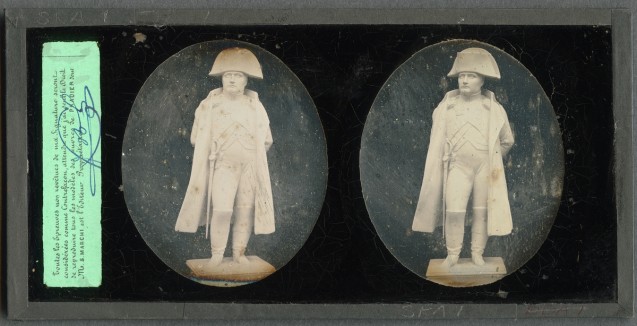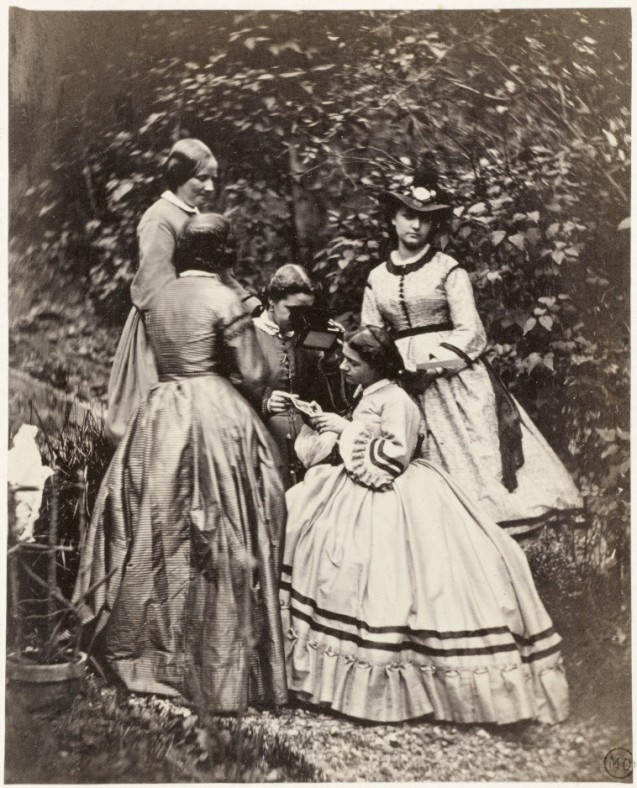Photography, from its invention at the end of the 1830s to its development and rapid democratisation over the following 15 years, changed our society forever. A simple glance at the science, art and law articles in the French papers of the 1850s and 60s says it all.
Throughout the 1850s and 60s, while astronomers were trying to make daguerreotype images of the stars, and as advertisements for photography textbooks (intended for both specialists and amateurs) and photographic equipment (between the advertisements for mechanical hats and garden hoses) multiplied, police began to use photography for solving criminal investigations (for example, in the case of an accidental death, Le Droit-Journal des Tribunaux, 28 March, 1859, and in the case of a European investigation into a love-fuelled suicide, La Gazette, 5 December 1864). Sometimes police photography became quite fanciful, and several French newspapers, including La Gazette Nationale printed on 10 July, 1866, covered one particular American story: the eye of a man who had been found dead (and probably killed) was photographed in order to discover the last image that had been printed on its retina. The photograph supposedly revealed ‘curious facts’, and according to the story, ‘a gun, a hand and part of the face of the man who committed the crime [had] been perfectly reproduced’!
Photography itself became the subject of trials. Some photos were judged to be licentious, and in other cases the new form of image making had been used in the reproduction of counterfeit banknotes (La Gazette de Lyon, 18 December, 1850).
In 1853, Salvator Marchi, the plaster mould maker who worked for the sculptor James Pradier (who had died in 1852), and sole owner of the right to reproduce Pradier’s work, sued both photographers and distributers of Pradier’s statuettes. The distributers had had the idea of producing a stereoscope photo album (the stereoscope was a fashionable tool at the time that showed people, monuments and objects in 3D when the viewer looked into the lenses). In Marchi’s view, this would have a negative impact on his trading of Pradier’s statuettes, especially in Russia. Russians seemed to prefer to buy stereoscopes to look at the artist’s work (they cost 10 francs, with each proof costing 5 to 6 francs), since such stereoscopic images were less fragile and therefore less likely to break in transit than the plaster statuettes. However, the courts ruled in Marchi’s favour, ordered the albums to be confiscated, and set fines and damages (Le Droit-Journal des Tribunaux, 16 December 1853).
 Stereoscopic daguerreotype made by Lemaire Opticien Fabricant, Paris: Napoleon I by James Pradier. Certificate of Authenticity: “all proofs not bearing my signature will be considered as counterfeit, since I alone have the right to reproduce all the models of Pradier’s works of which Mr. S. Marchi is the owner publisher”(Tekniska museet) Public Domain Mark.
Stereoscopic daguerreotype made by Lemaire Opticien Fabricant, Paris: Napoleon I by James Pradier. Certificate of Authenticity: “all proofs not bearing my signature will be considered as counterfeit, since I alone have the right to reproduce all the models of Pradier’s works of which Mr. S. Marchi is the owner publisher”(Tekniska museet) Public Domain Mark.
In 1856 Adrien Tournachon, alias Nadar Jeune, sued the magazine L’Artiste for publishing his photograph of Gérard de Nerval in its March edition without his permission (Le Droit-Journal des Tribunaux, 16 June 1856). The director of the magazine, Arsène Houssaye, was ordered to pay damages and forbidden from publishing the photograph (it is interesting to note that in 1856 Adrien challenged his elder brother Félix for the rights of the pseudonym Nadar and its use (La Presse, 28 April, 1856)).
In 1867, the sculptor Jean-Baptiste Carpeaux took legal issue with the photography agency of MM Carjat and Cie over photographs of his sculpture Prince impérial et son chien Néro (the Prince Imperial and his dog, Nero). This sculpture of the young prince and his pet had been commissioned by the imperial government in 1864, and was a great success at the 1866 Salon. In November of the same year, Carpeaux asked the Carjat and Cie agency to make proofs of the statue, in three different poses – front, profile and back – which he intended to keep for his own use. Unable to reach an agreement with the photographer Étienne Carjat about the delivery and price of the proofs and photographs, and fearing that the photographs of his work would be marketed without his consent, Carpeaux obtained the sequestration of the proofs and photographs. He requested that the court set their price at the amount he had agreed to pay for them when they were delivered, to prohibit the photographer from marketing them, and to award damages. Carjat considered himself the owner of the prints and photographs, and therefore claimed that the Tribunal could not set their price. He was prepared to destroy the prints, and to ask Carpeaux for damages. The Droit-Journal des Tribunaux of 22 November 1867 reported the verdict of the 1st chamber of the Civil Court of the Seine – the prints had to be destroyed, and the proofs be given to Carpeaux versus payment. The sculptor was not granted the right to claim damages.
The matter of photographic reproduction of public monuments came before the courts first in 1855, and then in 1869.
In 1855, the company building the Palais de l’Industrie (built to house the Universal Exhibition from May to November) claimed that it held exclusive rights of reproduction (by drawing or photography) of the Palais, and therefore took legal issue with the publishers of a book featuring shots of the building. Due to the public nature of the building (recognised in Article 20 of the specifications by the Company), it lost its case. (Le Droit-Journal des Tribunaux, 21 April, 1855).
Carpeaux went to court again in September 1869, this time to stop the photographer Jules Raudnitz from selling photos of his sculpture La Danse [Dance], made to adorn the façade of the new Opera House (The Opera Garnier). Carpeaux had previously granted exclusive photography rights for this to a photographer named Appert. At Carpeaux’s request, the photographs were seized at Raudnitz’s home on the 2 and 6 September (Le Droit-Journal des Tribunaux, 18 September 1869). While awaiting judgment, Carpeaux continued to publish advertisements in the press: Carpeaux’s Sculpture at the new Opera House, with and without the ink attack* – Appert, photographer, 24 Rue Taitbout, the only one authorized by the artist. Album, 2 fr; business cards, 1 fr; engravings, 3 fr and 5 fr. (Le Rappel, 12 September 1869).
Carpeaux and Appert lost their case before the Civil Court of the Seine (1st chamber): “the right of reproduction of a work of art (in this case a work of sculpture) is transferred at the same time as the right of ownership of the work, of which it is only an accessory right, when this transfer has taken place on the part of the artist, without reservation of the right of reproduction” (Le Droit-Journal des Tribunaux, 31 March 1870).
* Carpeaux’s work had been unveiled to the public on 25 July, 1869, and, judged obscene by many, was defaced with ink during the night of August 26 to 27. Carpeaux seized the opportunity to exploit this act of vandalism.
Head of Service and Digital Communication Chef du Service Documentation at the Fondation Napoleon
February 2020
Translation by JR


